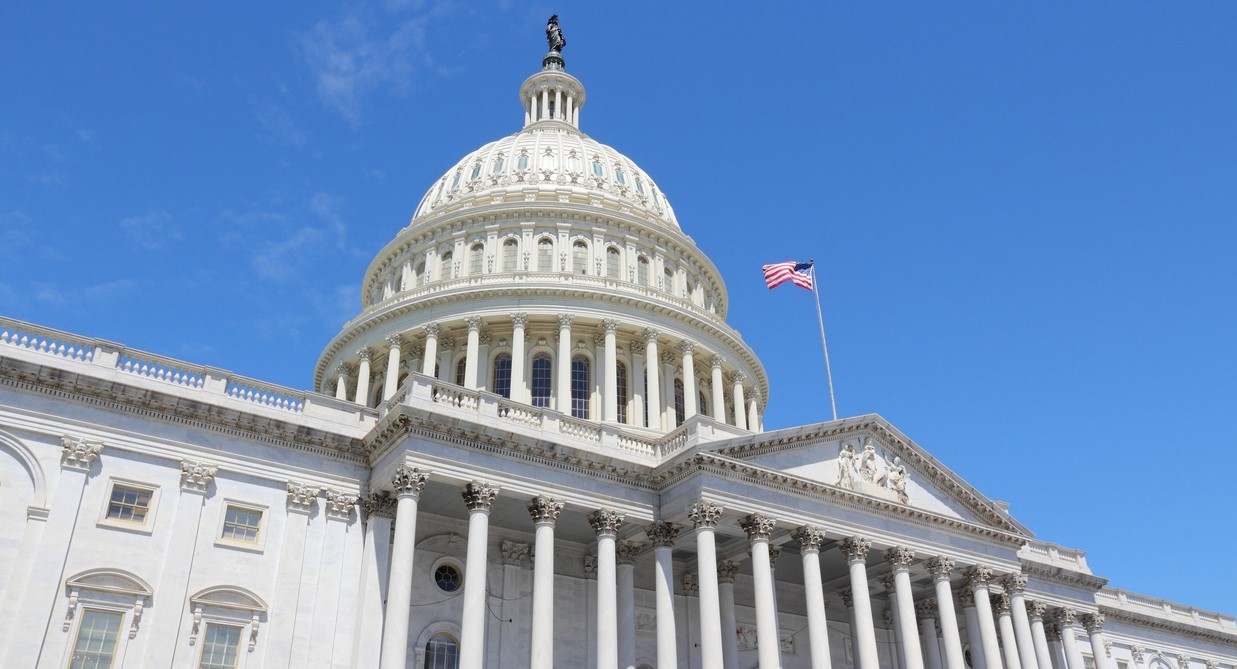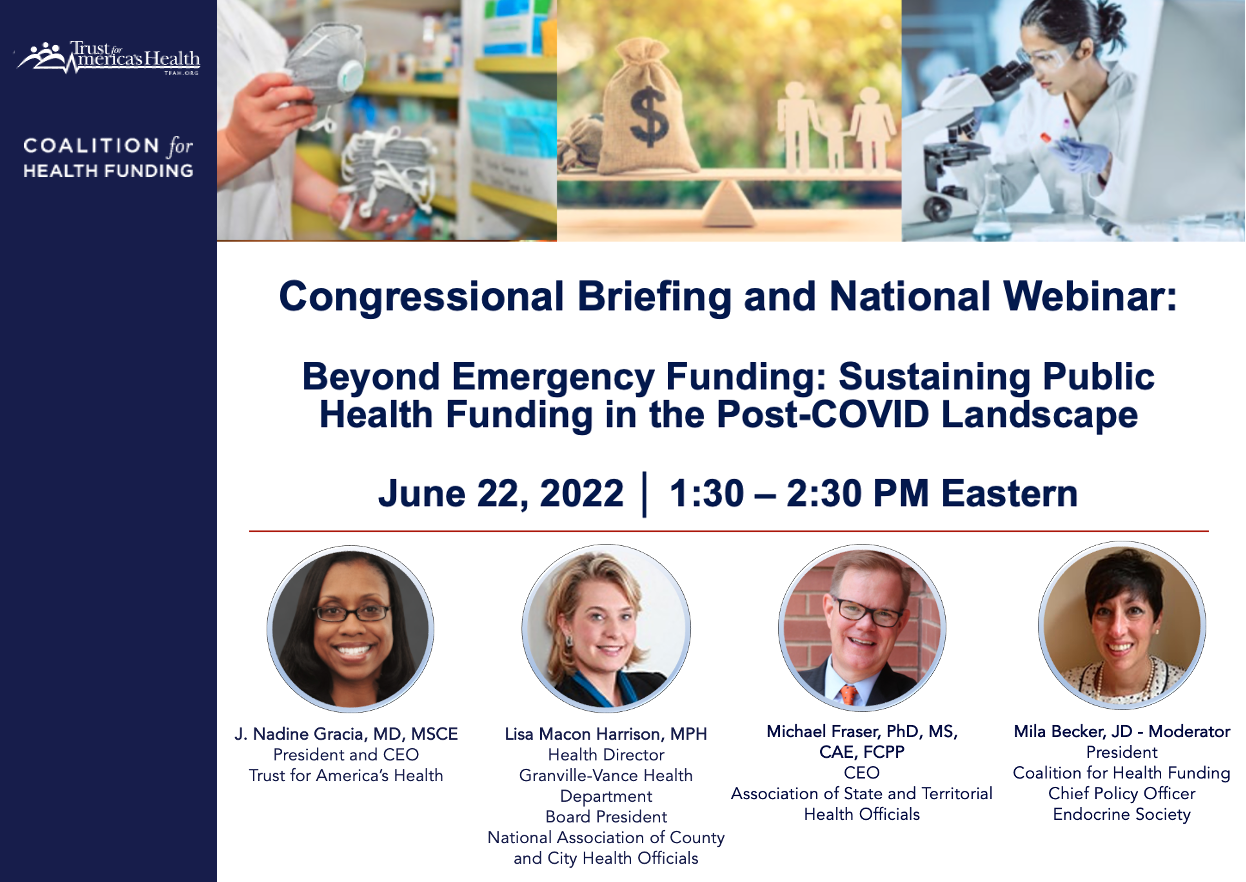Se necesita una inversión sostenida en infraestructura de salud pública y preparación para proteger vidas durante brotes de enfermedades y desastres naturales
(Washington, DC – 23 de marzo de 2023) – A medida que los brotes de enfermedades infecciosas y los fenómenos meteorológicos extremos amenazan la salud de más estadounidenses, un nuevo informe muestra la necesidad de fortalecer la preparación para emergencias de salud pública a nivel nacional y estatal.
Ready or Not 2023: Protecting the Public’s Health from Diseases, Disasters, and Bioterrorism, informe publicado hoy por Trust for America’s Health, mide la preparación de los estados para responder a un espectro de emergencias de salud y brindar servicios de salud pública continuos. El informe brinda a los funcionarios de salud federales y estatales y a los formuladores de políticas datos procesables y recomienda políticas para mejorar la preparación para emergencias de la nación en un momento en que las emergencias de salud están aumentando. Durante el 2022, los Estados Unidos superó el millón de muertes debido al COVID-19 y experimentó tasas decrecientes de vacunas de rutina y una prevalencia creciente de información errónea sobre la salud. Además, el año pasado fue el octavo año consecutivo en que los Estados Unidos experimentó 10 o más desastres relacionados con el clima con un impacto de mil millones de dólares.
El informe clasifica a los estados y al Distrito de Columbia en tres niveles de desempeño para la preparación para emergencias de salud: alto, medio y bajo. El informe de este año colocó a 19 estados y DC en el nivel de alto rendimiento, 16 estados en el nivel de rendimiento medio y 15 estados en el nivel de bajo rendimiento.
Nivel alto: 19 estados y DC
CO, CT, DC, DE, FL, GA, KS, ME, MD, MA, MS, NJ, NC, OH, PA, UT, VT, VA, WA, WI
Nivel medio: 16 estados
Alaska, Alabama, AR, CA, IA, ID, IL, IN, MO, ND, NE, NH, NY, RI, SC, TX
Nivel bajo: 15 estados
AZ, HI, KY, LA, MI, MN, MT, NM, NV, OK, OR, SD, TN, WV, WY
“Una inversión mayor y sostenida en infraestructura de salud pública, preparación para emergencias y equidad en salud salvará vidas”, dijo J. Nadine Gracia, M.D., MSCE, presidenta y directora ejecutiva de Trust for America’s Health. “Los funcionarios federales, estatales y locales, así como los líderes de los sectores empresarial y de atención de la salud deben utilizar nuestros hallazgos para identificar y abordar las brechas en la preparación de la salud pública. No hacerlo significará que el país no estará tan preparado como debe estar para la próxima emergencia de salud pública”.
Las áreas de fuerte desempeño incluyen:
- La mayoría de los estados han hecho preparativos para expandir la capacidad de los laboratorios de atención médica y salud pública en una emergencia.
- La mayoría de los estados están acreditados en las áreas de salud pública o manejo de emergencias. Algunos estados están acreditados en ambos.
- La mayoría de los residentes de EE. UU. que recibieron el agua de su hogar a través de un sistema de agua comunitario tenían acceso a agua segura. Sin embargo, las fallas recientes en el sistema de agua en Jackson, Mississippi y Newark, Nueva Jersey demuestran la importancia de prestar atención continua a la integridad de los sistemas de agua municipales.
Las áreas que necesitan atención incluyen:
- Muy pocas personas se vacunaron contra la gripe estacional el año pasado a pesar de la mejora significativa en las tasas de vacunación contra la gripe en los últimos años. Durante la temporada de influenza 2021-2022, el 51 % de los estadounidenses de 6 meses o más recibieron una vacuna contra la influenza, muy por debajo de la meta del 70 % establecida por Healthy People 2030.
- Solo la mitad de la población de los Estados Unidos cuenta con un sistema integral de salud pública. Los sistemas integrales de salud pública aseguran que los servicios de salud necesarios estén disponibles para todos los residentes.
- Solo el 26 por ciento de los hospitales en los estados, en promedio, obtuvo una calificación de seguridad del paciente de máxima calidad en el 2022. Las puntuaciones de seguridad hospitalaria miden el desempeño en temas tales como las tasas de infecciones asociadas con la atención médica, la capacidad de cuidados intensivos y una cultura general de prevención de errores.
El informe contiene recomendaciones para acciones políticas que crearían un sistema de salud pública más sólido en todos los niveles, que incluyen:
- La Administración, el Congreso y los legisladores estatales deben modernizar la infraestructura de salud pública, incluso mediante la inversión de $4500 millones anuales para respaldar las capacidades básicas de salud pública. Además, el Congreso debe continuar aumentando los fondos para el acuerdo cooperativo de preparación para emergencias de salud pública y la modernización de datos de salud pública para permitir una detección más temprana y precisa de amenazas emergentes para la salud.
- Los formuladores de políticas en todos los niveles deben actuar para proteger y fortalecer a las autoridades de salud pública y deben priorizar la recuperación de la confianza en las agencias y líderes de salud pública.
- El Congreso y las legislaturas estatales deben invertir en comunicaciones efectivas de salud pública, incluida la lucha contra la desinformación.
- El Congreso y los estados deben garantizar la cobertura del primer dólar para todas las vacunas recomendadas bajo seguros comerciales y para personas sin seguro. Los estados deben minimizar las exenciones de vacunas para niños en edad escolar, y los centros de atención médica deben aumentar las tasas de vacunación para los trabajadores de la salud.
- El Congreso y los estados deben otorgar licencias remuneradas con protección laboral a los empleados debido a enfermedades o demandas de cuidado familiar.
- El Congreso y los estados deben invertir en políticas y capacidad para abordar los determinantes sociales de la salud, como vivienda segura, acceso al transporte y acceso a alimentos saludables.
- El Congreso debe financiar toda la empresa de contramedidas médicas (MCM), incluida la distribución y dispensación de MCM. El Congreso también debería crear incentivos para nuevos productos para prevenir y combatir las infecciones resistentes a los antibióticos.
- El Congreso y los estados deben fortalecer la preparación para el cambio climático, el clima extremo y las amenazas a la salud ambiental.
Lea el informe completo en: Ready or Not 2023
Trust for America’s Health es una organización no partidista y sin fines de lucro que promueve la salud óptima para cada persona y comunidad y hace de la prevención de enfermedades y lesiones una prioridad nacional.



